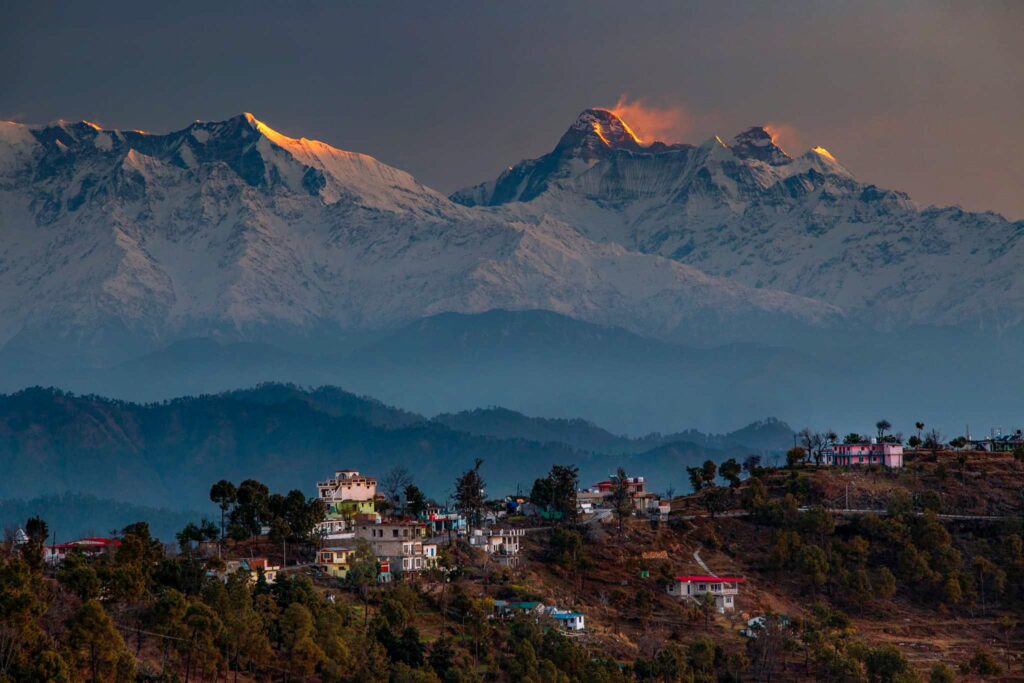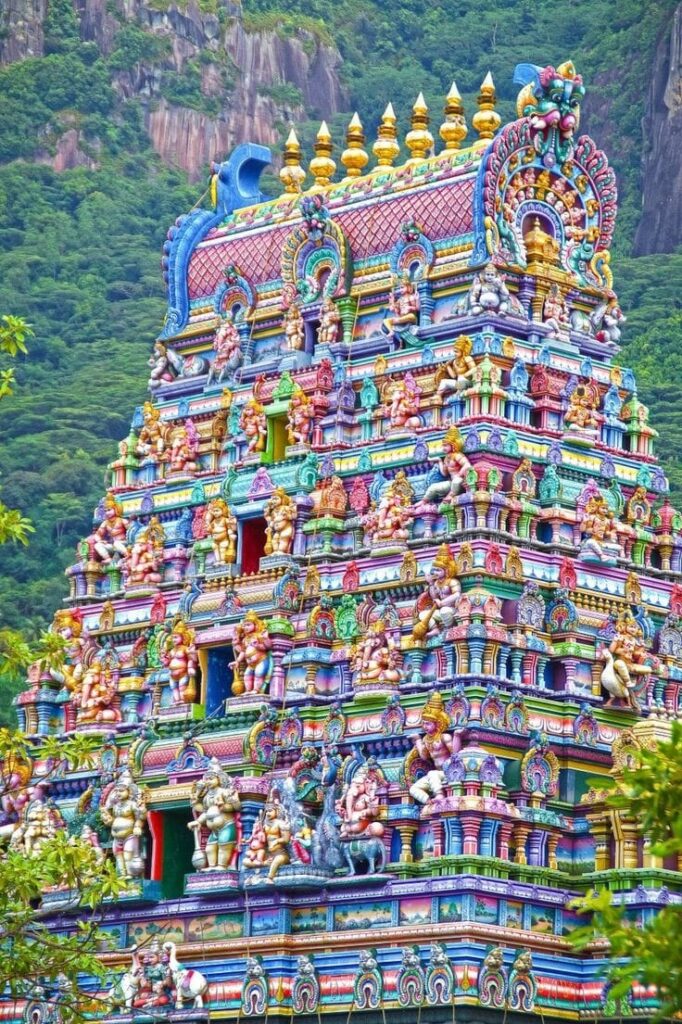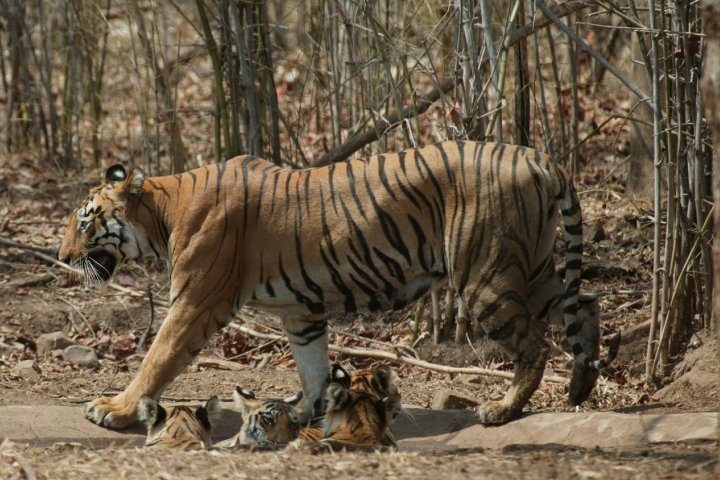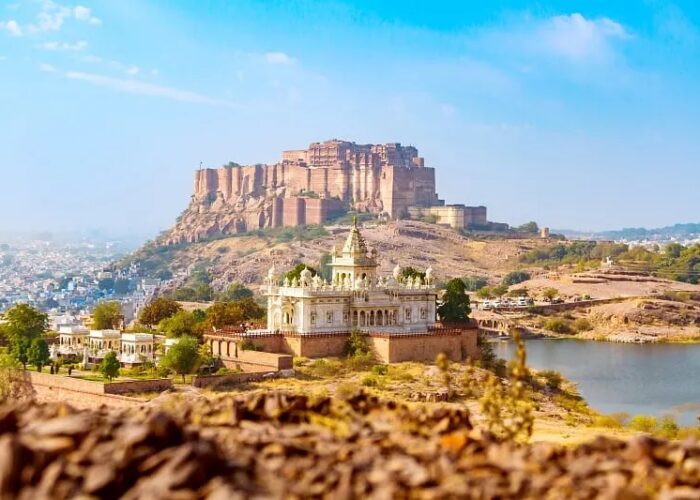Summary of the climate in India state by state
Please keep in mind the sites that advise you on the best period for a trip to India: considering the size of the country and its geographical and climatic variety it is virtually impossible to find, in a general way, an ideal season to plan a tour. Instead, it is more useful and interesting to understand where and when you will encounter the monsoons, making the appropriate distinctions by area, region, and state.
India has three seasons: winter months according to the calendar, from December to February. However, don’t think about cold temperatures like those we are used to: if we exclude the Himalayan and pre-Himalayan states (Sikkim-Darjeeling, Himachal Pradesh, Uttarakhand, Ladakh, Jammu & Kashmir) it is practically impossible for temperatures to approach zero. Let’s say that we go from 6° minimum and 21° maximum in January in Delhi, to 14°/26° in the same month in Calcutta, to reach 15°/27° in Bangalore and 17°/31° in Mumbai.

The Indian summer corresponds to the European spring and reaches its peak between April and May. Temperatures rise significantly in these months and states such as Rajasthan, Delhi, Tamil Nadu, Uttar Pradesh & Bihar can easily reach 40°. Then comes the rainy season, or the monsoons, which hit India with intensity and at variable times, depending on the location, the proximity of the sea, or the protection of the mountains. The monsoon season usually starts from mid-July to September, with several exceptions.
However, we believe that speaking generically about the climate and monsoons in India leaves time to be found: it is better instead to analyze the situation state by state so that you can choose the most suitable period to plan a do-it-yourself trip to India depending on the area you intend to visit.

The Climate & Best time to explore India
When to Plan a Trip to Andhra Pradesh?
Andhra Pradesh, whose capital is Hyderabad, is located in the central south of the country. The summers are very hot, the winters decidedly mild (consider an average minimum temperature around 14°-15° between December and January). The monsoon begins in June and ends no earlier than October/November, but in this area, the rains are quite scarce. Consider for example that throughout the year just over 700 millimeters of rain falls in Andhra Pradesh, while in July alone over 800 millimeters fall in Mumbai. During the monsoon, if you have the patience to endure a couple of strong thunderstorms per week (usually in the afternoon/evening) it is not a problem to visit this state.
When to Plan a Trip to Arunachal Pradesh?
To the north-west of the country, Arunachal Pradesh (capital Itanagar), borders Bhutan and has a climate characterized by fairly cold winters (especially at high altitudes) with average minimum temperatures reaching 4°/5°C, mild summers with maximum temperatures not exceeding 25°C and decidedly long monsoon season. It starts slowly in March, intensifies until it reaches its peak in June and July (months in which we advise you not to go), and then fades away and finally ends at the end of October. If we had to choose the ideal month to visit the state we would say November.

When to Plan a Trip to Assam?
Assam, with the capital Dispur, is a state in the northeast of India that is remote and alien to mass tourism and has a fairly volatile climate: winters are not particularly harsh and have minimum temperatures that rarely drop below 5°. The period from October to March is undoubtedly the best to visit this area. During the monsoon season, the rains fall decidedly abundant: a further problem is also given by the early monsoon which very often hits Assam starting from March-April instead of arriving between June and July. If you want to push your luck and leave between March and April, you should know that usually in these months the monsoon is not yet very violent and that the maximum temperatures in this period of the year are decidedly more bearable than in the rest of India. The months from June to October are considered off-limits for a trip to Assam.
When to Plan a Trip to West Bengal?
The shape of West Bengal, long and narrow, causes a strong climatic difference between the south of the state, near or on the sea, and the Himalayan regions to the north. The winter climate is therefore more than temperate in the vicinity of the Bay of Bengal (it does not fall below 13°/15° C) and much colder in Darjeeling and its surroundings. Summers, from March to May, are hot throughout the state even if record temperatures are not reached like in the more western regions. The monsoons arrive in June and fade towards the end of September and are quite intense. It is not recommended to plan a trip to West Bengal during these four months.

When to Plan a Trip to Bihar?
The state is located in northern India, sandwiched between Uttar Pradesh and West Bengal. It has a climate very similar to the other neighboring states, with winters enjoying average temperatures above 10°/12°C (with some harsh days reaching close to 0°C), hot but not fiery summers (hardly except in some days of May reach 38°/40°C) and a monsoon season that starts in June and arrives at the end of September with an average of 300 mm of rain per month during the worst months i.e. July and August. After the monsoon and until November, Bihar is swept by tropical cyclones, which are very important for the state’s agriculture. The months from October to April are the best to visit, but if you are not afraid of the heat (May) and then the start of the rains (June), you can extend your stay for a further two months.
When to Plan a Trip to Chhattisgarh?
State in central India, the capital city of Chhattisgarh is Raipur, with a typical tropical climate: winters not excessively cold, especially in terms of seasonal averages (sometimes it drops below 10°C but usually the temperature is around 15°/20°C), very hot summers (with peaks of 45°C in May) and violent monsoons (1200 mm of rainfall per year) from June to the end of September. The rains in the border areas with Maharashtra and Jharkhand are more abundant. Tourism in Chhattisgarh is increasing not only for the wonders it hosts but also because between October and March (but often also at the beginning of April) the climate is truly pleasant.

When to Plan a Trip to Goa?
Understanding the climate of Goa is very, very simple: temperatures remain around 22°/30° (minimum and maximum) throughout the year, with only a few large variations (downwards between December – February and upwards between April and May. Technically the monsoon arrives in May and retreats at the end of October, but the worst months (and therefore in which a trip to Goa is not recommended are June, July, and August). Just think that only in August do they fall on the state beyond 900 mm of rain From the end of September to mid-May Goa has a constant climate, warm but without excesses, and little rain.
When to Plan a Trip to Gujarat?
Deciding when to visit the Gujarat peninsula is very easy: let the monsoons end, then towards the beginning of October, and until March you will find a spectacular region, also in terms of climate: for almost six months you will have average temperatures around 15°-20° and very little rainfall. Then slowly summer arrives, a very hot season in these parts, with the thermometer easily reaching above 40°. The monsoons are generally of moderate strength (nothing catastrophic) and have their peak between June and July: the area on the border with Pakistan is much less rainy, but why risk it when there is a very long winter season with an ideal climate?

When to Plan a Trip to Haryana & Delhi?
In the state of Haryana and the territory of Delhi, the climate is not the best: winter can be quite cold, with minimum temperatures that in some areas get dangerously close to 0°C (they are, however, exceptions), and summer, especially in May – by far the hottest – the mercury can reach over 46°C. This scorching heat, combined with a not-too-powerful monsoon that starts late (July) and ends early (end of September) leads to a climate that is at times semi-desert. It is not for nothing that it is the state immediately north of Rajasthan. The best time to visit Haryana is October-November and February-March.
When to Plan a Trip to Himachal Pradesh?
Summer, from March to June, is certainly the best season to visit the state. With temperatures always above 22°/25°C and with highs below 38°C, you can go trekking in the high mountains with an ideal climate. The monsoon season runs from July to September: don’t think that just because it is at a high altitude the state is not affected by the rains typical of all of India. In these months temperatures drop by 7°/8°C. Winter is cool, but no freezing temperatures. They range from 0°C in the highest cities (with heavy snow above 3000 metres) to a maximum of 15°C.

When to Plan a Trip to Jammu & Kashmir, Ladakh?
The state of Jammu and Kashmir, due to its size and the different altitudes of its regions, has a very varied climate. In general, however, most tourists visit Kashmir and in particular Ladakh for its trekking routes in the high mountains, which are decidedly inaccessible during the winter, from December to February. While the southern area of Jammu is affected by the monsoon season, in Ladakh summer rainfall is decidedly scarce. Consequently, it is the best season to visit the region, which has pleasant temperatures until October, when the cold season begins to arrive.
When to Plan a Trip to Jharkhand?
Jharkhand is a state that is still little known by international tourists, despite a pleasant climate that favors visits throughout the year: in fact, while the winters are mild (average temperatures around 18°C, with minimum temperatures that rarely fall below 9°C; in the summer months of April and May it is hot but never reaches 40°C as in other areas of India. The monsoon period goes from June to September, but in the two central months, the rainiest, more than 350 mm of rain never falls per month.This means that even during our summer Jharkhand can be the destination for a trip, if you arm yourself with a little patience.

When to Plan a Trip to Karnataka?
The state with capital Bangalore, the home of India’s technological and electronics industry, has a climate that can be divided into three zones. in general, summers have a moderate climate, with temperatures rarely exceeding 35°C. The central part of the state, more mountainous during this season, obviously has a cooler climate. However, the situation changes a lot during the monsoons: while the regions in the center and east have rainfall that goes from May to the end of November (sometimes even the beginning of December) but with low intensity (around 150 mm in the worst months), the coast is instead affected by a decidedly more pronounced monsoon season. In any case, during the returning monsoon, from September to November, the rains gradually decrease, not preventing tourism in the state.
When to Plan a Trip to Kerala?
The homeland of maritime tourism in India has a very long monsoon season, which starts at the end of May and runs until November: the rains are much more abundant in the coastal area of Kerala while in the eastern area they are moderate. Already in mid-November, however, the situation is more than bearable while the months of January, February and March have the ideal climate for organizing a trip to Kerala: temperatures below 30°C and sun will brighten your days whether you want to relax on its beaches than venturing into the backwaters.
When to Plan a Trip to Madhya Pradesh?
Summer in Madhya Pradesh (April, May and early June) is scorching: visit the state in this season only if you are used to spending your days above 40°/42° or you intend to take refuge in the hilly/mountainous area, definitely fresher. Subsequently, in the months of July and August the monsoons hit the region, to begin to decline between September and October, when with a little luck and patience you can organize your trip. Winters have very significant temperature changes and it is not uncommon to see the mercury drop to around 5°C, although the average temperature is decidedly acceptable.

When to Plan a Trip to Maharashtra?
Maharashtra has very hot summers, with temperatures that can easily reach above 40°C from late April to May (the coast is cooler than the inland regions). The monsoon arrives in June and affects the state quite differently between the coast and the eastern area: Mumbai and all the areas on the coast have a very violent rainy season, with areas where over 2000 mm of rain falls in the months starting from June in October. Going to these parts during the monsoon is really not recommended. The entire eastern area has an equally long monsoon season, which therefore extends until October, but is decidedly less rainy. Especially in the months of September and October you can easily organize a trip to eastern Maharashtra without worrying too much about the rains. As in much of India, winter is a great season to visit the state: temperatures from 12° to 25° in almost all regions.
When to Plan a Trip to Manipur, Mizoram, Nagal & Tripura?
This is the group of four small states in the far east of India and on the border with Bangladesh also because of the very small extension of the latter compared to other Indian states and because they have a similar climate to each other. First of all, unlike other regions where three seasons alternate during the year, here are only two seasons: monsoon and winter. From November to February, when it is technically winter, temperatures are mild and hover between 20°C and 30°C. The first signs of the monsoon arrive already in March, which hits the region very very heavily, especially in the months of June and July. In Nagaland and Manipur the heavy rain season lasts until August. In any case, even in September and October, even if it decreases in intensity, the states are crossed by the monsoon.

When to Plan a Trip to Meghalaya?
This north-eastern Hill State whose capital is Shillong, has a pleasant and moderate climate for a large part of the year. During the summer months, from April to June, temperatures vary from 15 to 25°C, while in the winter months, from December to January, the climate can be harsher, reaching minimums of 4°C. The rainy season runs from June to September, many local tourists choose to visit the area during these months, for the beauty that the rains give to nature and because the splendid waterfalls are at their maximum power. In any case, the best months and with the least uncertain climatic conditions range from October to April, considering that the month before and after the monsoon can be quite rainy (but normally not in a limiting way).
When to Plan a Trip to Orissa?
The best time to visit this eastern Indian state and its capital Bhubaneswar is certainly from the month of October to March, including the post-monsoon period and winter, during which temperatures normally remain between 10° and 30° C. The monsoons hit with force especially during the month of July, often causing flooding and circulation problems, while they usually wane between August and September. Summer, from April to June, can be very hot and humid, reaching peaks of 45°C at the end of the dry season, making it very difficult for those who are not used to extreme climates to stay in these areas.

When to Plan a Trip to Punjab?
To the north-west in Punjab and its capital Chandigarh, winter (when rainfall is limited) runs from October to early March and is the best time to plan your trip. Daily temperatures are around 15-20°C but nights can be cold, reaching a minimum of 5°C. In summer, from March to May, the heat can become very oppressive (up to 40°C). At the end of May the first monsoon episodes appear, bringing strong humidity and very violent storms. The monsoons last until the end of September with torrential rains. During this period you may encounter various difficulties in traveling, in fact flights are often canceled and roads and railways are not passable.
When to Plan a Trip to Rajasthan?
From October to March is the ideal period to visit the large state of Rajasthan, in the north-west of India, rich in tourist interests. in these months the temperatures here are pleasant between 15 and 27°C, the humidity is low and the sky is clear and bright. The months of December and January are the coolest and in desert areas (such as the splendid Jaisalmer) however the temperature range can be very marked, in fact night temperatures can even drop below zero. If you decide to go to Rajasthan in this period (for example for the Christmas and New Year holidays) consider that many low-category accommodations do not have heating and you could find yourself sleeping in the cold! From April to June, the summer months, temperatures rise up to 45°C with very high levels of humidity, creating many problems for the resistance of foreign tourists. The monsoon hits these areas between July and September, but (except in exceptional cases) it is weak, but in this period the high temperatures and extreme levels of humidity can be more limiting than the rain.

When to Plan a Trip to Sikkim?
This destination for nature lovers in the Himalayan mountains is spectacular especially in spring during the flowering period. From March to May, when its valleys are green and lush and it is possible to appreciate endless fields of flowers and meet interesting wild fauna. The nights can be cold, but during the day the bright sun ensures pleasant temperatures of up to 25°C. From June to September the monsoon is at its peak, and it is not recommended to venture along various trekking and hiking routes. From October the monsoon begins to decrease, but temperatures also drop. However, October and November are considered very interesting months for ecological tourism, the temperatures drop but – following the monsoon – the rivers and waterfalls are at their peak and the brilliant green of nature is unparalleled. From December to February snowfall can be heavy, so non-experts are advised not to avoid this period.
When to Plan a Trip to Tamil Nadu?
The climate of Tamil Nadu, a large state in southern India with the capital Chennai, is more stable than in other Indian states, in fact here the temperatures and humidity remain relatively high all year round, between 45°C and 20°C . The colder season (between December and March) and the beginning of the summer season (from mid-June then July and August), often gloomy but with limited rainfall, are the best periods to explore the country both inland and along the coasts . April and May are the hottest months, with temperatures up to 45°C and the heat can be truly suffocating. In Tamil Nadu, the rainy season is between late September and November, when the late northeast monsoon brings rain in spurts. Precipitation can be extremely limiting in hilly areas and these areas experience the lowest temperatures in the state around December, so we recommend bringing heavy clothing if you plan to visit these areas during this period.

When to Plan a Trip to Uttarakhand?
As you may have noticed, in much of India it is recommended to plan a trip during the winter, i.e. from October to the end of February. This applies to many states, but not to the Himalayan and pre-Himalayan ones, such as Uttarakhand. Although the temperatures lend themselves to tourism (ranging from 3°C to 15°C depending on the altitude), many roads are blocked due to ice and snow. Many cities can still be visited (for example, if you want to practice and study yoga in an ashram in Rishikesh you will have no problems), but a trip to the state without the possibility of seeing its mountains is definitely a waste. It is therefore better to postpone a few months and go to those parts between March and June, when summer temperatures exceed 20°C and reach up to 35°C, an ideal climate for trekking and walking. During the monsoon season the mercury drops by 5°/10°C, but a trip is not recommended, especially in the months of July and August, where the rains are more abundant.

When to Plan a Trip to Uttar Pradesh?
One of the Indian states in northern India with the most extreme climate, i.e. very hot summers and bitter cold in winter. From April to June there is the hottest period and temperatures reach maximums of 45°C and rarely fall below 30°C, while from January to March there are the coldest months, often with minimums even below 10°C. The most intense monsoon period runs from July to September, while the post-monsoon period from October to December is an excellent time to travel. January, February and March – full of cultural events and festivals – are also perfect months to visit this state, but think about wearing warmer clothing.

